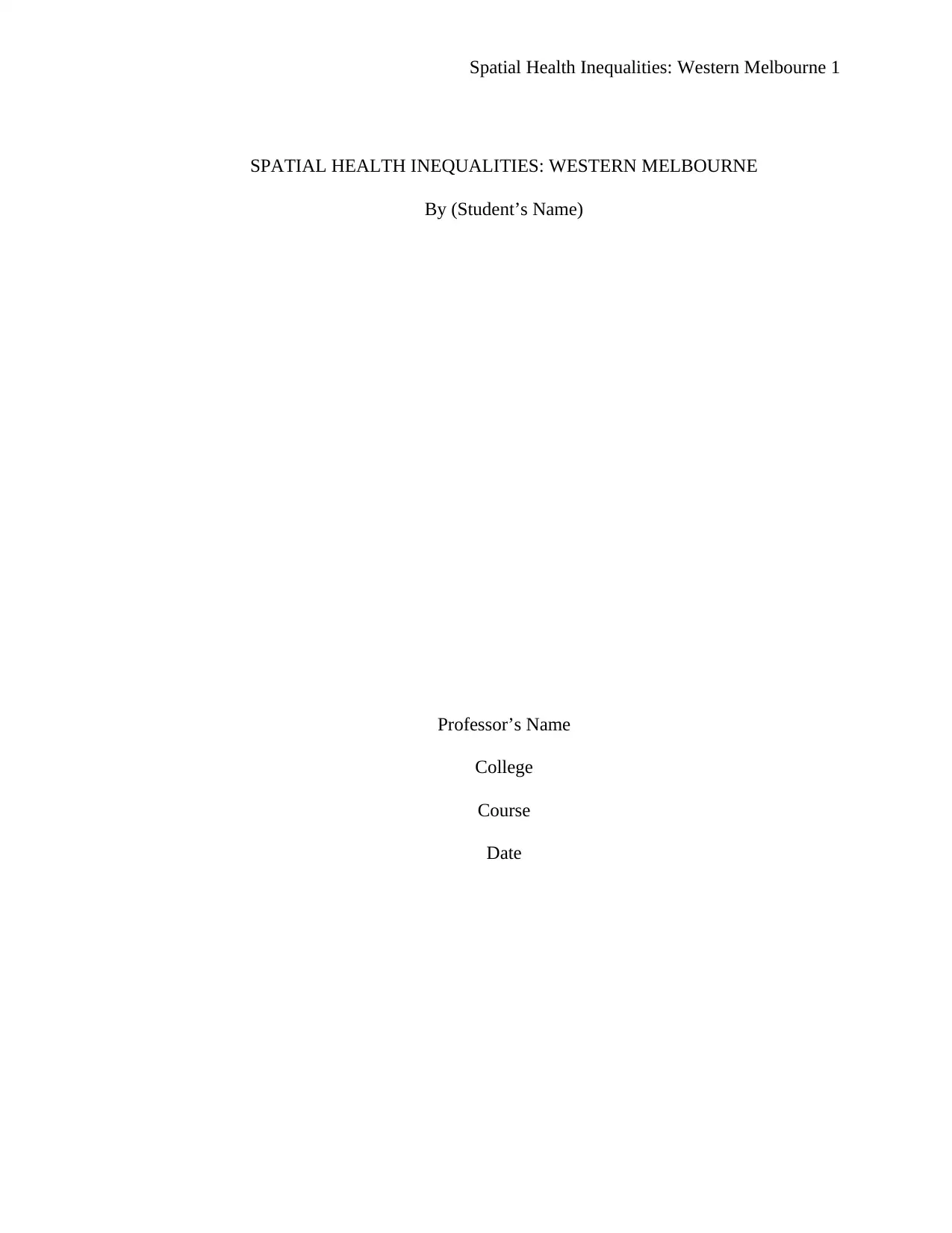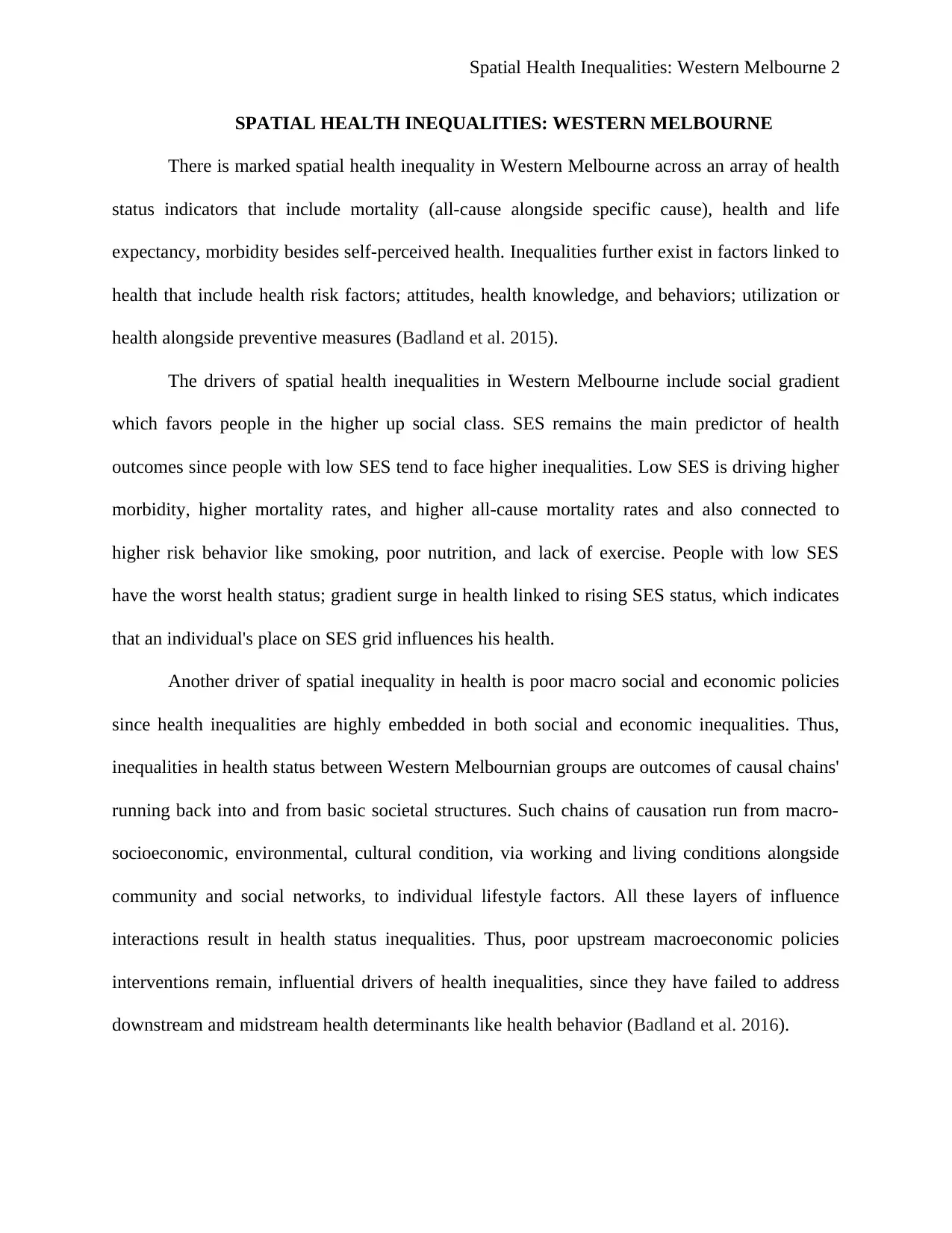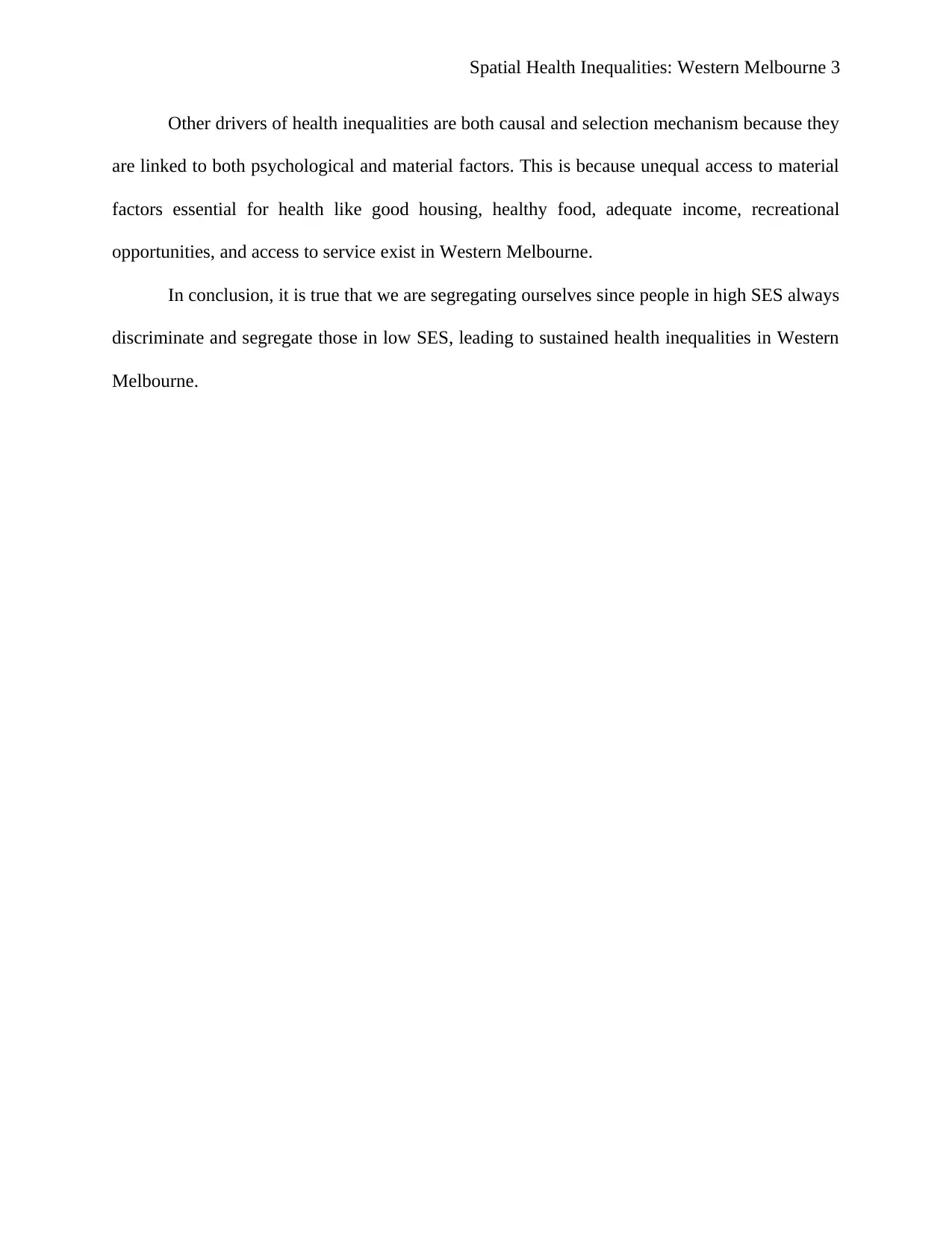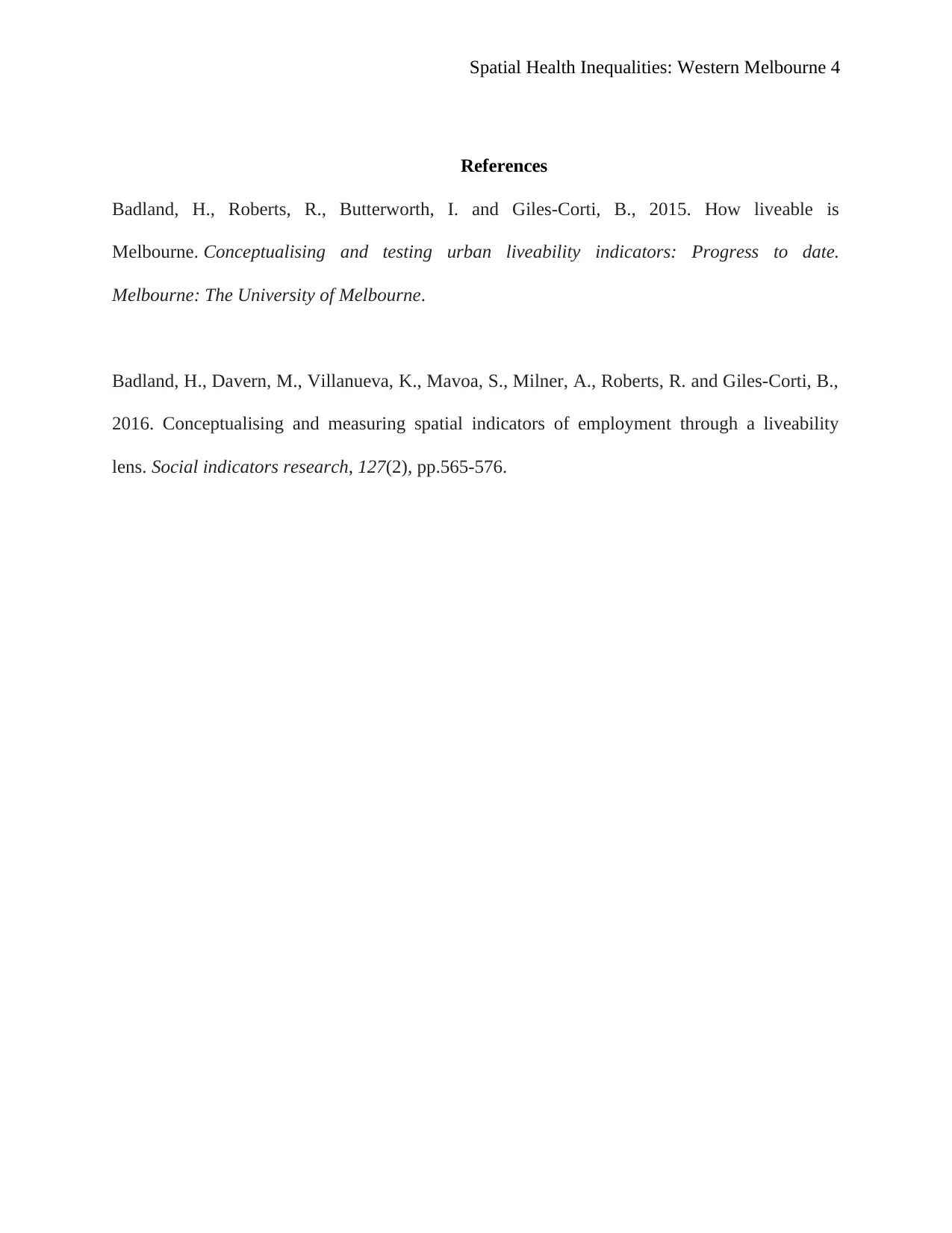Spatial Health Inequalities in Western Melbourne: An Analysis
VerifiedAdded on 2022/09/17
|4
|518
|41
Report
AI Summary
This report examines spatial health inequalities in Western Melbourne, highlighting the significant disparities in health status across different socioeconomic groups. The study reveals that factors like socioeconomic status (SES) are major drivers of these inequalities, influencing mortality rates, morbidity, and overall health. The report further explores the impact of poor macro-social and economic policies, which fail to address health determinants, as well as the role of both causal and selection mechanisms related to access to essential resources. It concludes that discrimination and segregation contribute to the perpetuation of health inequalities. The report references studies by Badland et al. (2015, 2016) to support its findings.
1 out of 4





![[object Object]](/_next/static/media/star-bottom.7253800d.svg)